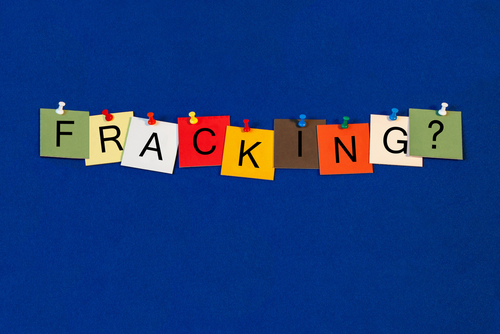Fracking Company Settlement
 |
In late December 2014, the Environmental Protection Agency (EPA) and the Department of Justice announced a settlement with a subsidiary of the nation’s largest holder of natural gas reserves for violations of the Clean Water Act (CWA). According to the EPA, the company allegedly violated sections 301(a) and 404 of the CWA when it “discharged and/or fill material at eight sites in West Virginia’s Harrison, Marion and Upshur Counties,” resulting in environmental damage to “approximately 5,357 linear feet of stream and 3.38 acres of wetlands …”
The settlement alleged that the violations were related to the construction of facilities used in natural gas extraction at the sites “including but not limited to well pads, freshwater pits, access roads, a pipeline, and a compressor station pad.” According to the EPA, the alleged violations were discovered through routine joint inspections with the Army Corps of Engineers, information provided by the state and voluntary disclosure by the company following an internal audit. Under Section 404 of the CWA, “filling or damming of wetlands, rivers, streams, and other waters of the United States without a permit from the U.S. Army Corps of Engineers (Corps)” is prohibited.
Forget expensive calls to lawyers and consultants. With Enviro.BLR.com, you get instant access, 24/7. Try it out today and get the 2015 EHS Salary Guide, absolutely free. Download Now.
The injunctive relief agreed to in the settlement includes:
1) Restoration of all eight sites where restoration is feasible. Restoration plans for each site will be submitted to the EPA for approval, and the company will monitor all restored sites for up to 10 years in order to assure the success of the restoration. Additional “various requirements intended to permanently preserve the restored sites” were also included in the consent decree.
2) Compensatory mitigation, where appropriate, will be performed “to offset the permanent impacts to aquatic resources at sites that could not be restored due to lack of access.”
Everything You Need for Environmental Compliance
Enviro.BLR.com puts everything you need at your fingertips, including practical RCRA, CAA, CWA, hazardous waste regulatory analysis and activity, news, and compliance tools. Try it at no cost or risk and get a FREE report.
3) Implementation of a program to assure compliance with Section 404 of the Clean Water Act, including an employee training program. The compliance assurance program will include:
- Training on the Clean Water Act Section 404 for “employees, contractors, and affiliates whose responsibilities include the design and construction or supervision of employees of oil and gas facilities in West Virginia for a period of five years after the entry of this consent decree.”
- Implementation of a compliance protocol in West Virginia that will require the company to “use a qualified wetlands professional to assess all aquatic resources within any proposed limit of disturbance and within 100–300 horizontal feet of any proposed limit of disturbance, depending on the project, prior to the submission of any application to the state Department of Environmental Protection for new and expansive construction of well pads or impoundments, or to conduct any other construct activity, beyond its currently approved limit of disturbance, and to the state Division of Highways for construction of any associated access road(s).”
- For relevant sites, the company will also “prepare an alternatives analysis, design facilities to avoid and minimize impacts to aquatic resources, and implement construction techniques that are certified by a registered professional engineer to ensure rapid stabilization of disturbed earth while assuring appropriate erosion and sediment controls are consistent with state or local erosion requirements, and ensure that no earth disturbance occurs until appropriate permits are obtained pursuant to CWA Section 404 and applicable West Virginia law.”
The EPA estimates the cost of restoring the eight sites will be approximately $3 million, and the company also agreed to pay a civil penalty of $2.3 million, which is “one of the largest civil penalties for unauthorized discharges of dredged and/or fill material under the Clean Water Act” and will be divided equally by the United States and the state of West Virginia.
